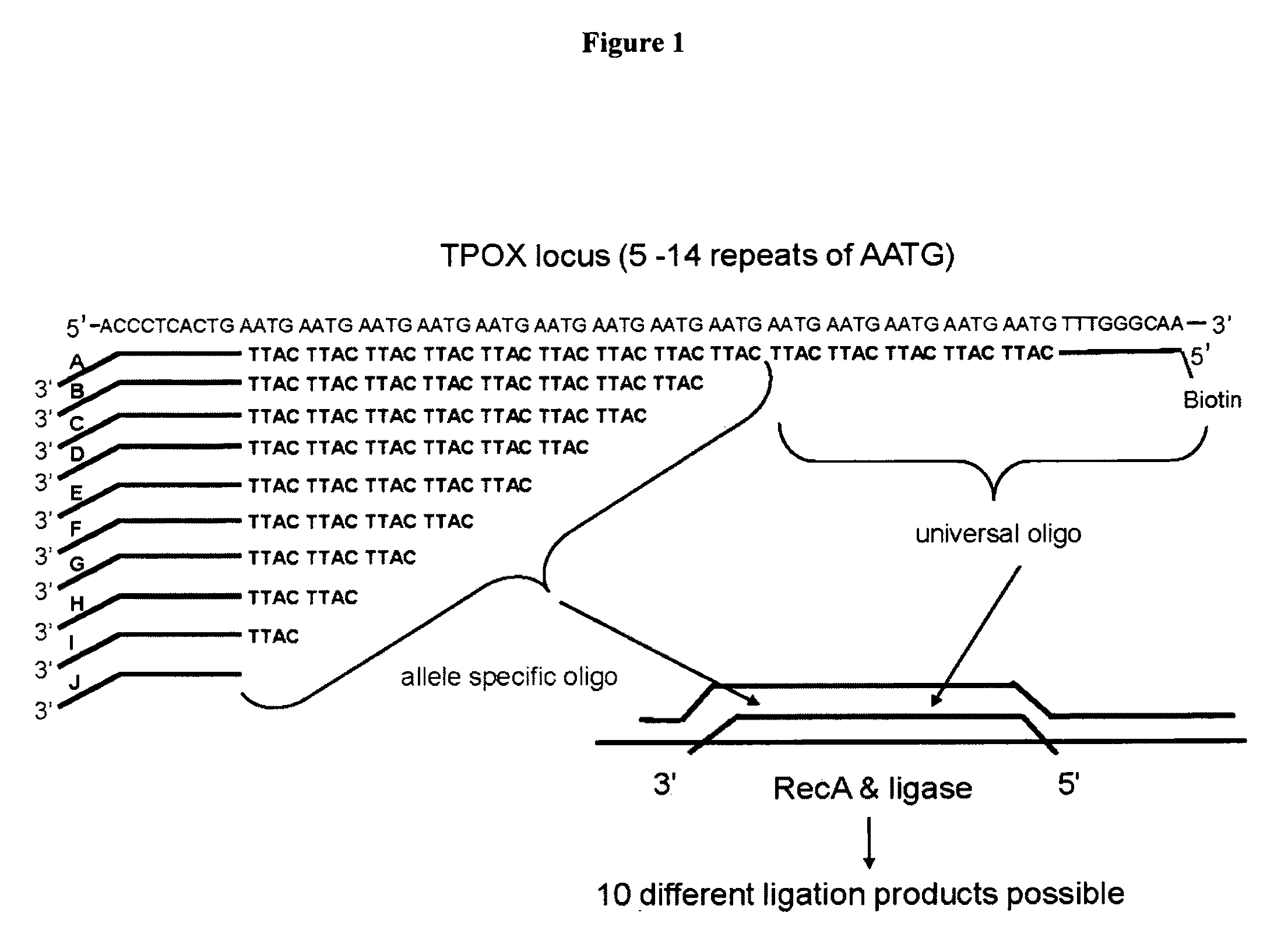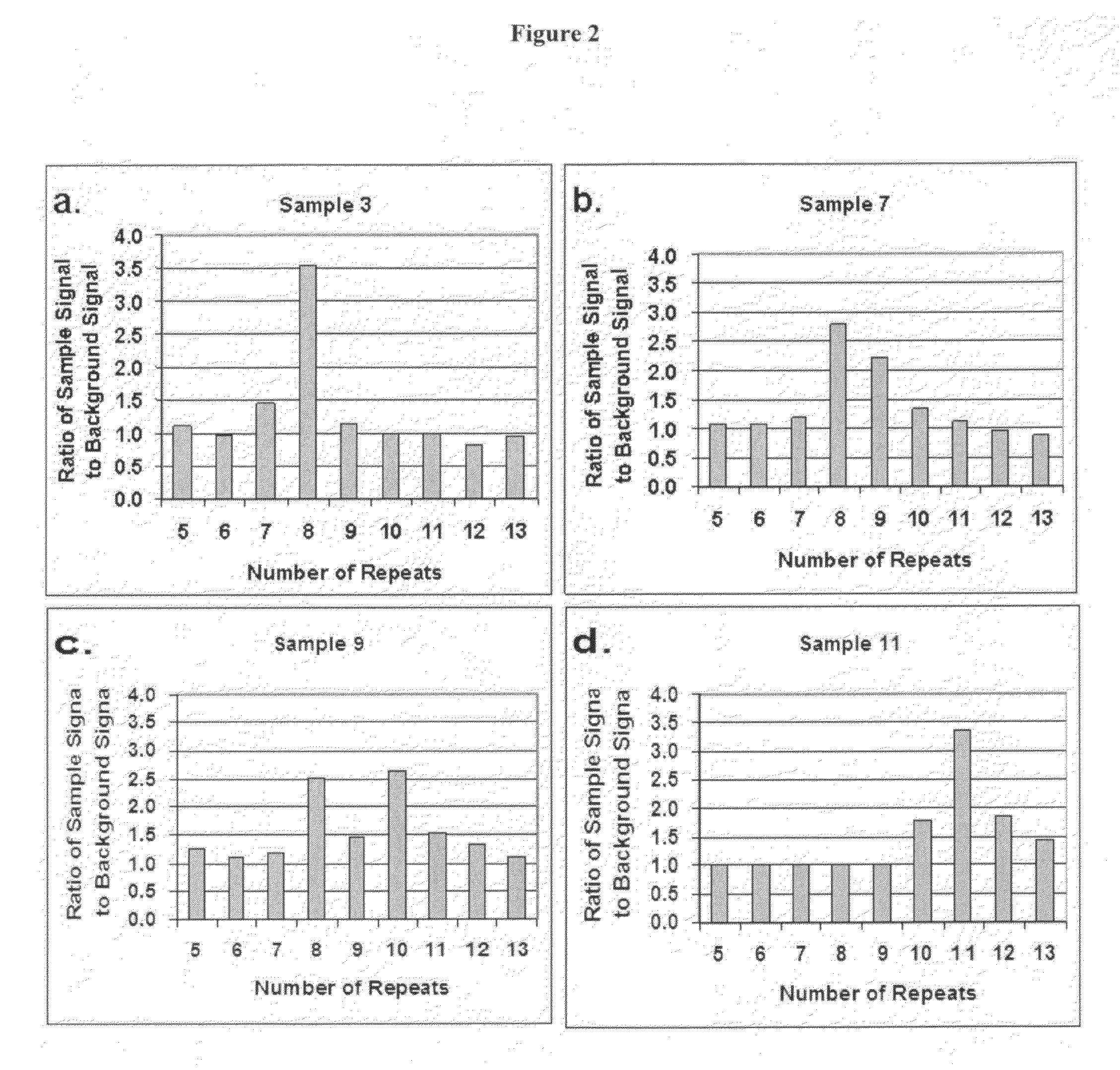Method for genotyping DNA tandem repeat sequences
- Summary
- Abstract
- Description
- Claims
- Application Information
AI Technical Summary
Benefits of technology
Problems solved by technology
Method used
Image
Examples
Embodiment Construction
[0037]The present inventors have devised a novel technology for determining the number of repeat units in a region of double stranded DNA including a tandem repeat region (RML-STR) and determining if a given DNA sample is from a chimeric organism, based on RecA mediated homology searching followed by repeat number specific oligonucleotide ligation. In general, the present methods employ:
(1) a double stranded target or test DNA molecule, which may be any synthetic, viral, plasmid, prokaryotic or eukaryotic DNA from any source, including, but not limited to, genomic DNA, restriction digestion fragments or DNA amplified by PCR or by any other means;
(2) single stranded DNA oligonucleotide probes, which might be any synthetic oligonucleotide, PCR amplicon, plasmid DNA, viral DNA, bacterial DNA or any other DNA of known sequence or of sequence complementary to the target DNA or to a portion thereof,
(3) E. coli RecA or a homologue thereof, as defined below.
[0038]As used herein and in the p...
PUM
| Property | Measurement | Unit |
|---|---|---|
| Composition | aaaaa | aaaaa |
| Fluorescence | aaaaa | aaaaa |
| Chemiluminescence | aaaaa | aaaaa |
Abstract
Description
Claims
Application Information
 Login to View More
Login to View More - R&D Engineer
- R&D Manager
- IP Professional
- Industry Leading Data Capabilities
- Powerful AI technology
- Patent DNA Extraction
Browse by: Latest US Patents, China's latest patents, Technical Efficacy Thesaurus, Application Domain, Technology Topic, Popular Technical Reports.
© 2024 PatSnap. All rights reserved.Legal|Privacy policy|Modern Slavery Act Transparency Statement|Sitemap|About US| Contact US: help@patsnap.com










